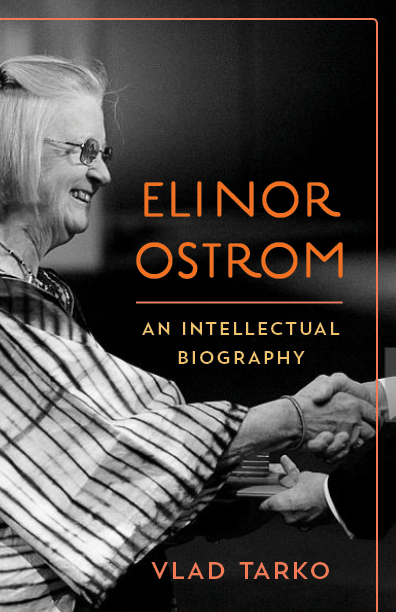En décembre dernier est parue une biographie d’Elinor Ostrom, lauréate du Prix Nobel d’Economie en 2009 pour ses travaux sur les Communs. Ecrit par Vlad Tarko, ce livre (en anglais) revient sur ses apports théoriques et les éclairent par des aspects de sa trajectoire personnelle.
Voici son sommaire :
Introduction: The idea of self-governance as the foundation to institutional analysis and development
Overcoming prejudice
Basic principles of institutional economics
What are institutions?
Transaction costs
The limits of institutional design
The role of the expert
Vincent Ostrom’s contribution to the Alaskan constitution
The expert as a catalyst of self-governance
1 Against Gargantua: The study of local public economies
From UCLA to Indiana
The complexity of public services
The rise and fall of community policing
How reliable are citizens’ surveys?
The failure of “community policing”
The impossibility of efficient hierarchical public economies
Control over the cause of the problem
Accurately measuring the demand for public goods and the opportunity cost of providing them
Fiscal equivalence and redistribution
The separation of production and provision
2 Polycentricity: The art and science of association
A few examples of large-scale polycentric systems
The scientific community
Common law
Federalism
Polycentricity as a framework for the analysis of emergent orders
Complex adaptive systems
Vincent Ostrom’s polycentricity conjecture
3 Escaping the tragedy of the commons: The concept of property and the varieties of self-governing arrangements
Beyond markets and governments
Civil society is a real thing
The hard case: common-pool resources
What are property rights?
Property is a bundle of rights
Self-governance depends on mechanisms for monitoring and enforcing rules
Why state solutions often fail
The complexity and limits of private property
Summary
Bottom-up solutions to social dilemmas
From Prisoners’ Dilemma to the Stag Hunt
Beyond the Prisoners’ Dilemma model
4 Resilience: Understanding the institutional capacity to cope with shocks and other challenges
Conceptualizing resilience
An equilibrium perspective
Highly optimized tolerance
The problem of self-interested actors evading rules
Polycentricity as a method to design resilient systems
Avoiding slippery slopes
Entrepreneurship, creative destruction, and the Red Queen race
Summary
Elinor Ostrom’s “design principles” for resilient systems
The operational level
The collective choice level
The constitutional level
How general are these principles?
5 Hamilton’s dilemma: Can societies establish good governments by reflection and choice?
The Institutional Analysis and Development (IAD) framework
Action arenas and institutional roles
Evaluation of outcomes
Example: Socio-ecological resilience
Institutional factors
The action arena
Patterns of interactions and the evaluation of outcomes
Institutional evolution and public entrepreneurship
Rules as the basic unit of institutional evolution
Public entrepreneurship
Coproduction
Building a science of association
Conclusion: Elinor Ostrom as a role model for social scientists
Source : Elinor Ostrom biography | Vlad Tarko
